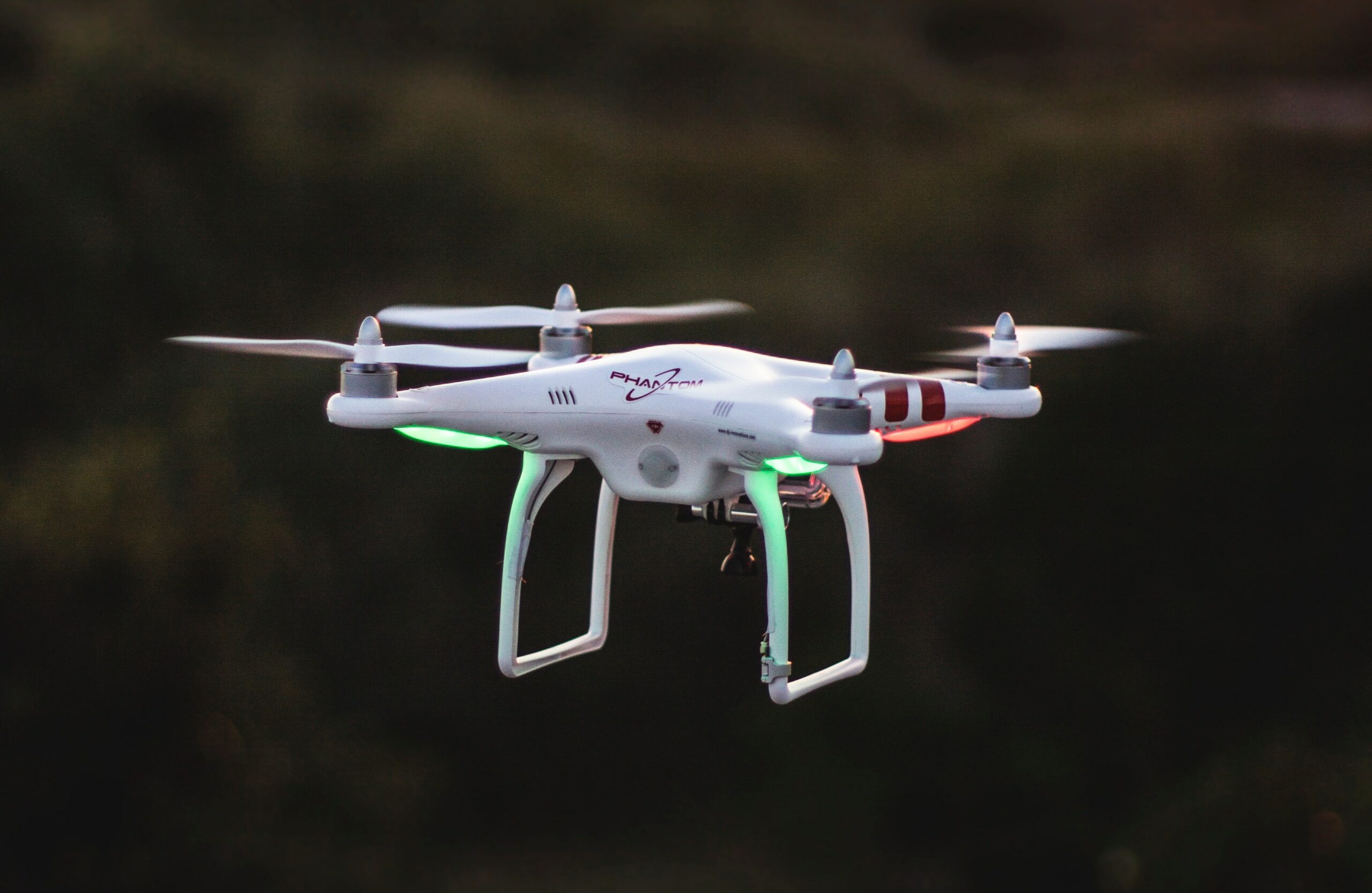During the year-end holidays I completed the Ohan4, the fourth BaseN nDrone prototype. Unlike Ohan1-3, the Ohan4 was a miniature tricopter design, with a single, servo-tilting rear motor and 12 centimeter propellers. Nevertheless, it sported a powerful STM32F7 flight controller and a Raspberry Pi Zero W as the spime-enabling secondary computer.
With the miniature design, I had to avoid using heavy connectors so most internal wiring (GPS, WiFi, compass, servo, status leds, buzzers etc.) I soldered in directly. Only the battery had the standard XT60 connector. At the end, it looked fairly compact, apart from RPi Zero protruding unaesthetically under front propellers.
So why am I writing in past tense? Well. Confident as I am as a pilot (flying aeroplanes), I am not that experienced with multicopters, especially with tuning the flight control parameters of a unique design or orientating with the remote control. After all, the idea of the Ohan family is to demonstrate how BaseN SES Platform can do most of the difficult stuff instead of a controlling human.
Eager to see how a tricopter maneuvers compared to quadcopters (I was told that the rear servo makes it feel bit more aeroplanish), I took it outdoors with default stabilization parameters and only basic radio control mapping. The plan was to hover in an altitude less than 5m on our front yard and land immediately with the first sign of trouble. The RPi Zero W was connected to outdoor Wifi, and I also enabled the camera to record the maiden flight. I also enabled a kill switch, to disarm (that is to stop the motors immediately) the drone into one of the radio controller switches.
The little drone flew surprisingly well, with stable hovering, solid GPS lock and, yes, an aeroplanish feel in those turns. I flew it some 5 minutes and decided to end the maiden flight. Mission accomplished.. almost. I had the Ohan4 in the so-called Loiter mode, which uses GPS to maintain accurate position while the radio control is untouched. However, this mode also controls the throttle (motor speeds) and I had accidentally moved it to something like 3/4 of full power from the radio transmitter.
Now in my hastily created radio channel mapping, I had a mode called Stabilize between Loiter and Land. So when I thought I switched to Land mode, the drone actually went into Stabilize mode (which does not hold altitude nor position) – with almost full throttle, meaning that it shot up like a rocket into something like 100m. In that altitude there was already quite some wind, and even though I was able to return to Loiter mode after a moment, the 17cm x 17cm drone was very difficult to see and control in that altitude, especially as it had not been properly calibrated.
In a minute or so, the drone drifted behind large trees and I lost eye contact. At that point I should have enabled RTL (Return to Landing), but that was not in my radio mapping. Furthermore, the WiFi connection had broken so there was no telemetry feed any longer. After a few control attempts, I ordered to drone to land – and then, without thinking clearly, disarmed it in mid-flight.
The Ohan4 weighted about 400 grams, and stopping the motors makes it to drop like a stone. It was over our wild forest with rocky ground and likely broke severely when landing, even though the 4mm carbon fiber design is tough. It did have a homing beeper through the motor controllers (motors are used as speakers), but during the building phase I had set a 60min delay for it. Also, if the battery was torn out, then it stayed silent. Now after 10 days, I still haven’t found it from the forest.
The mental effort to build the miniature design with all parts hand-adapted and electronics soldered with magnifying glasses was somewhat steep, so losing the Ohan4 was quite disappointing. When I now build the Ohan4-2, mostly from double parts I have already, I won’t fly it before the secondary computer has a full SES spime implementation and resilient telemetry feed; a Spime Digital Twin in other words. Had I done this with Ohan4, I would have had an accurate last position above the disarming site and I could have recovered it for sure. Now the search area is some two hectares, making it close to impossible to find. With Ohan1 we once accidentally dropped a 4G/LTE dongle into a large field we were flying it over; although that caused loss of IP connectivity, we still had secondary telemetry radio and were able to narrow the search area to something like 20x20m. The dongle was found in less than 15 minutes.
The Ohan4-2 will also have an emergency battery for the locator beepers, intial geofence setup and bit more aerodynamic shape due to different size and faster secondary computer. It turned out that the RPi Zero was not powerful enough to manage the connection to the primary flight controller while also recording video and feeding it via WiFi. This is also something which would have been evident with SES telemetry.
Another lesson for me? Flying, even a mini tricopter like Ohan4, is hard. That is why there are checklists, backup systems, emergency procedures and flight plans. I will have practiced all those before Ohan4-2 takes off in a couple of weeks.
Missed the last nBlog? Read it here.





4 replies on “Drone Chronicles: The Story of Ohan4’s Spimeless First Flight”
Dear basen.net admin, You always provide clear explanations and definitions.
Hello basen.net administrator, Keep up the great work!
Dear basen.net owner, You always provide in-depth analysis and understanding.
dieters herbal tea http://www.ashworthdrugs.com/zopes.html prescription coloured lenses